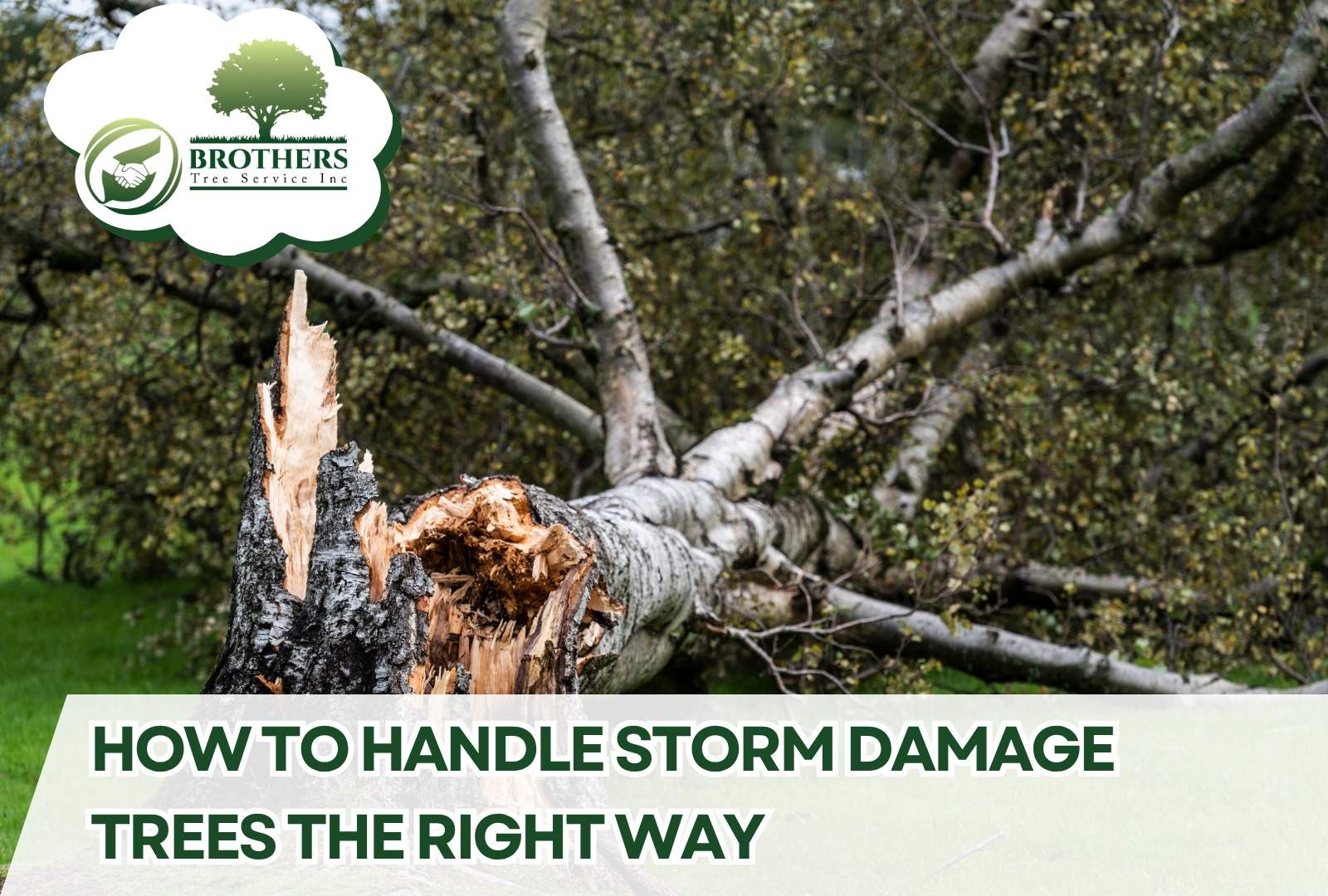
When severe weather hits, trees often take the brunt of the damage. Whether a tree cracks, leans, or falls completely, knowing how to handle storm damage trees is essential for safety and cleanup. Acting quickly—and carefully—can prevent further damage and reduce long-term costs.
At Brother’s Tree Service INC, we help homeowners navigate storm-related tree emergencies with safe, efficient solutions. In this blog, we’ll cover what to do after a storm-damaged tree falls, what affects fallen tree removal cost, and how to keep your property safe throughout the process.
First Things First: Protect People and Property
Immediately after a storm, check your surroundings. If a tree has fallen or is severely damaged, keep yourself and others away from the area, especially if there are visible hazards like broken branches, hanging limbs, or exposed roots. Contact us.
If the tree is touching power lines or structures, call emergency services first. For more detailed guidance, our tree safety tips explain how to manage risk safely in these situations.
Once it’s safe to do so, document the damage with photos. Take clear shots of the tree and any affected areas to support insurance claims. Then contact a trusted tree removal provider with storm experience, like our team at Brother’s Tree Service INC, to assess and clean up the site.
How Storm Damage Affects Tree Removal
Storm damage often results in unpredictable breaks, splits, or fallen trees that require more than a standard cleanup. Trees may fall unevenly, twist around structures, or be caught in other trees, making removal more difficult and dangerous.
Even partially damaged trees can present serious safety concerns. Limbs under tension, cracked trunks, or unstable roots require professional handling. We follow strict tree removal safety practices to remove trees without causing further harm to your home, yard, or surrounding trees.
What Influences Fallen Tree Removal Cost
Several key factors determine how much storm cleanup may cost. The size and type of tree, the difficulty of access, and whether the tree is leaning, split, or has fallen fully all play a role. Emergency timing—such as late-night or storm-day calls—can also affect service availability and complexity. Get in touch.
The more complex the situation, the more involved the equipment and crew response will be. In cases where cranes or special rigging are needed, expect additional planning and coordination. If you’ve noticed warning signs in your trees before the storm, our guide on tree removal signs can help you stay ahead of future emergencies.
FAQs – How to Handle Storm Damage Trees
What should I avoid doing after storm damage?
Do not climb the tree, attempt to cut branches, or move large limbs—especially if they’re resting on power lines or buildings. Always wait for professionals.
How do I know if a tree needs full removal or just trimming?
Trees with cracked trunks, uprooted bases, or major structural damage usually require removal. If only small branches are broken, trimming may be enough.
Can storm damage trees be saved?
Sometimes. Young trees or those with minimal damage might recover with corrective pruning. A professional can help assess the risk and health of the tree.
Let Us Help You After the Storm
Storm-damaged trees can be overwhelming, but you don’t have to handle them alone. Brother’s Tree Service INC specializes in fast, safe removal for fallen and damaged trees. From emergency response to thorough cleanup, we’ve got you covered.
Need help now? Explore our emergency tree removal services and contact us today.
